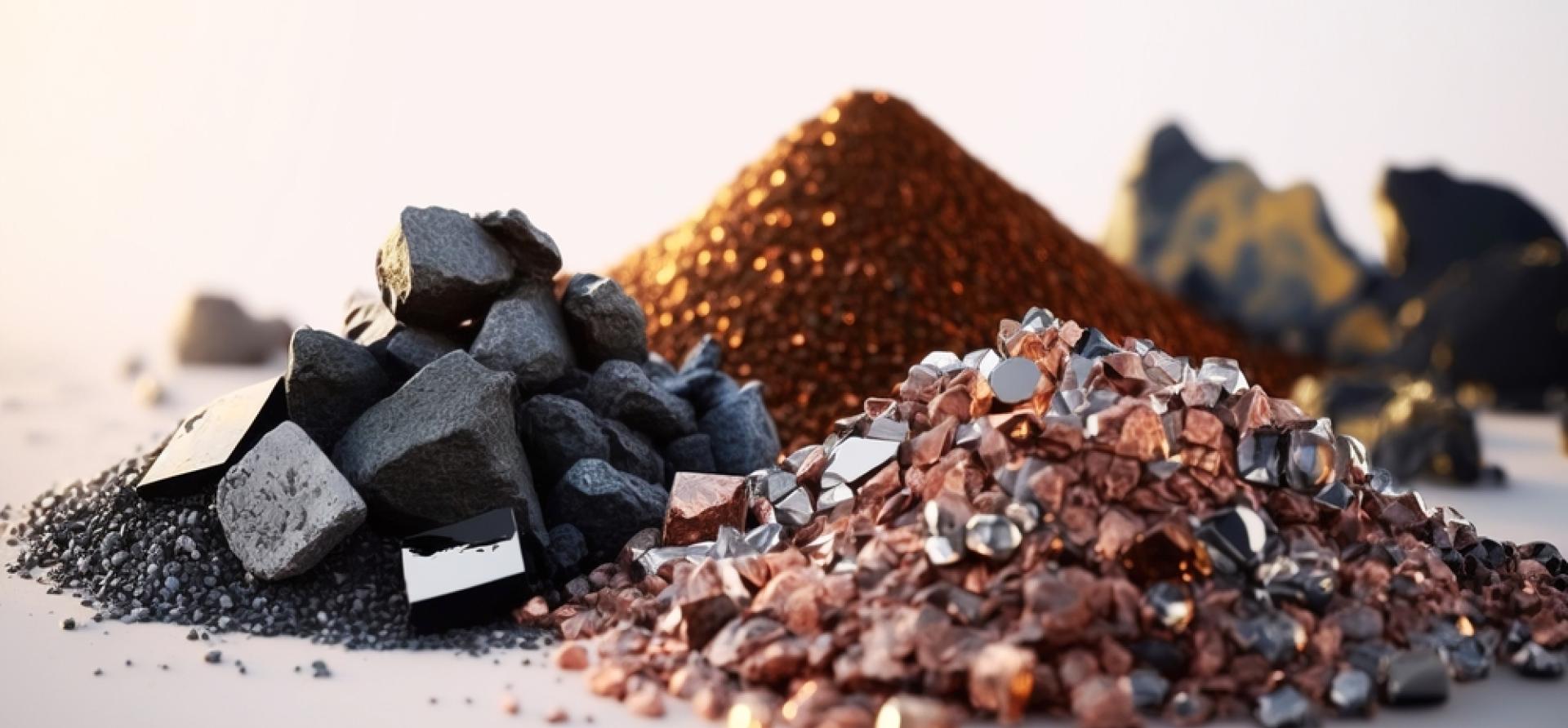COP28's role in building supply chain resilience for critical minerals

Key Findings
India’s participation in the Minerals Security Partnership (MSP), the European Union’s (EU) Critical Mineral Club and recent G20 engagements underscore its determination to cut dependence on China and fortify the domestic renewable energy supply chain.
To elevate India’s standing in the critical mineral arena, the government initiated the first tranche of auctions for critical and strategic minerals covering 20 blocks of lithium, REE (rare earth elements), nickel, copper, chromium, phosphorite, potash, glauconite, graphite, manganese and molybdenum.
Sharing technological advances in mining, extracting and processing critical minerals enhances efficiency, cuts environmental impact and promotes responsible extraction. COP28 offers a vital space for nations to discuss and forge agreements on cutting-edge mining technology transfers.
Emphasising critical minerals during COP28 is essential for creating solutions to reach our global sustainability goals and fostering innovation and collaboration.
As nations convene to review the global stocktake at the 28th Conference of Parties (COP28) and pledge to triple renewable energy capacity, India stands tall with its commitment to achieve 50% of its cumulative electric power installed capacity from non-fossil fuel-based energy by 2030.
However, achieving this ambitious goal hinges on widespread access, extraction and processing of critical minerals, currently limited to a few nations, posing supply chain vulnerabilities.
To elevate India’s standing in the critical mineral arena, the government initiated the first tranche of auctions for critical and strategic minerals covering 20 blocks of lithium, REE (rare earth elements), nickel, copper, chromium, phosphorite, potash, glauconite, graphite, manganese and molybdenum. This move follows the identification of a critical minerals list by the Ministry of Mines (MoM) and an amendment to the Mines and Minerals Development and Regulation (MMDR), Act that allows private sector participation. The auction will take place online in two stages using a clear ascending bid process.
Reducing reliance on critical mineral imports for domestic manufacturing becomes imperative, considering the substantial imports of amorphous graphite, cobalt oxides, and nickel oxides and hydroxides in the past five years. In the last five years (2017-2023), India imported 50,000 tonnes of amorphous graphite from China. Additionally, India also imported approximately 1,100 tonnes of cobalt oxide and 5,300 tonnes of nickel oxide and hydroxide, to meet domestic demand beyond just clean energy usage, as per the Ministry of Commerce.
India’s participation in the Minerals Security Partnership (MSP), the European Union’s (EU) Critical Mineral Club and recent G20 engagements underscore its determination to cut dependence on China and fortify the domestic renewable energy supply chain. India’s initiative to include `Energy security and diversified supply chains’ as one of the six priority areas of the G20 Energy Transitions Working Group was timely.
Critical minerals are poised to shape the future energy landscape, akin to how oil has historically shaped global economies and industries, but global reliance on China for these resources poses significant concerns. China accounts for 70% and 85% of the world’s rare earth mining and processing capacities, respectively. Further, 68% of nickel, 40% of copper, 59% of lithium, and 73% of cobalt global refining also takes place in China. Australia produces 55% of the world’s lithium, whereas South Africa mines 72% of the world’s platinum output.
This concentration is a source of concern as it heightens the risk of supply chain vulnerabilities, geopolitical tensions and potential monopolistic control, posing threats to global economic stability and security. Countries like India need some strategies to mitigate the same.
Strategic Mineral Management: Protectionist versus Global Cooperation
Global efforts, including the EU’s battery regulation, MSP, the United States of America’s (the U.S.) Inflation Reduction Act, Australia and Canada’s Critical Minerals Strategies aim to diversify highly concentrated supply chains. However, diversification sometimes blurs with protectionism, leading countries to adopt varied approaches. Nations like Chile and India focus on developing domestic production from underutilised mineral resources, while Australia targets expanding refining capabilities.
Conversely, Indonesia and China have opted for export bans on minerals like nickel ore, germanium, and gallium, impacting international prices and fostering more export restrictions.
A blend of both strategies—encouraging local production alongside international partnerships—is likely necessary for a robust and stable critical mineral framework. It will be intriguing to witness how COP28 navigates the delicate equilibrium between self-sufficiency and international collaboration in the upcoming deliberations.
Technology Transfers to Accelerate the Transition
Sharing technological advances in mining, extracting and processing critical minerals enhances efficiency, cuts environmental impact and promotes responsible extraction. COP28 offers a vital space for nations to discuss and forge agreements on cutting-edge mining technology transfers.
Engaging private agencies in exploration brings advanced expertise and finance for deep-seated minerals. India’s revised MMDR Act and auctions aim to leverage global expertise for mineral discovery through enhanced geological data processing.
These knowledge exchanges shall fortify mineral sourcing, foster sustainable practices in extraction and support global moves toward renewable energy and sustainable development.
Recycling for Efficient Resource Utilisation
Critical mineral recycling is pivotal in sustainable resource management, addressing environmental concerns and scarcity. Acknowledging this shift, the U.S.’ Infrastructure Investment and Jobs Act initiated a US$6 billion grant program, splitting funds for electric vehicle (EV) supply chain materials (including the refining of nickel, lithium, cobalt and rare earth elements) and battery manufacturing and recycling. The EU mandates battery importers to track raw materials and recycled content, often imposing recycling targets as per the EU Waste from Electrical and Electronic Equipment (WEEE) Act.
Effective infrastructure allows repeated mineral recycling, reducing primary supply reliance amidst rising demand. India is exploring similar recycling policies.
Emphasising critical minerals during COP28 is essential for creating solutions to reach our global sustainability goals and fostering innovation and collaboration. Addressing these challenges and committing to strategic resource management will contribute to creating a resilient and equitable future.
This article was first published by ET EnergyWorld.
















